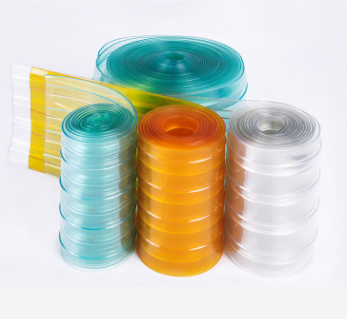- Afrikaans
- Albanian
- Amharic
- Arabic
- Armenian
- Azerbaijani
- Basque
- Belarusian
- Bengali
- Bosnian
- Bulgarian
- Catalan
- Cebuano
- Corsican
- Croatian
- Czech
- Danish
- Dutch
- English
- Esperanto
- Estonian
- Finnish
- French
- Frisian
- Galician
- Georgian
- German
- Greek
- Gujarati
- Haitian Creole
- hausa
- hawaiian
- Hebrew
- Hindi
- Miao
- Hungarian
- Icelandic
- igbo
- Indonesian
- irish
- Italian
- Japanese
- Javanese
- Kannada
- kazakh
- Khmer
- Rwandese
- Korean
- Kurdish
- Kyrgyz
- Lao
- Latin
- Latvian
- Lithuanian
- Luxembourgish
- Macedonian
- Malgashi
- Malay
- Malayalam
- Maltese
- Maori
- Marathi
- Mongolian
- Myanmar
- Nepali
- Norwegian
- Norwegian
- Occitan
- Pashto
- Persian
- Polish
- Portuguese
- Punjabi
- Romanian
- Russian
- Samoan
- Scottish Gaelic
- Serbian
- Sesotho
- Shona
- Sindhi
- Sinhala
- Slovak
- Slovenian
- Somali
- Spanish
- Sundanese
- Swahili
- Swedish
- Tagalog
- Tajik
- Tamil
- Tatar
- Telugu
- Thai
- Turkish
- Turkmen
- Ukrainian
- Urdu
- Uighur
- Uzbek
- Vietnamese
- Welsh
- Bantu
- Yiddish
- Yoruba
- Zulu
A Comprehensive Guide to Acrylic Sheets and Their Applications
Understanding Acrylic Sheets Versatility and Applications
Acrylic sheets, often referred to by their brand name Plexiglas, have emerged as a popular material in various industries due to their unique combination of properties. These transparent thermoplastic sheets are known for their clarity, durability, and versatility, making them an excellent alternative to traditional glass. In this article, we will explore the features, manufacturing process, and diverse applications of acrylic sheets.
Characteristics of Acrylic Sheets
One of the most notable features of acrylic sheets is their optical clarity. With a light transmittance of up to 92%, acrylic sheets offer a level of clarity comparable to that of glass, making them ideal for applications where transparency is essential. Furthermore, they are significantly lighter than glass, weighing approximately half as much, which makes handling and installation much easier.
In terms of durability, acrylic sheets are highly impact-resistant. They are nearly ten times stronger than glass, providing an excellent choice for environments where safety and longevity are paramount. Acrylic is also resistant to UV light, which helps maintain its clarity and color over time, making it suitable for both indoor and outdoor applications.
Acrylic sheets are also easy to work with. They can be easily cut, shaped, and molded to fit specific requirements. This adaptability, combined with their availability in various thicknesses and colors, makes acrylic sheets popular in creative and industrial applications alike.
Manufacturing Process
The production of acrylic sheets typically involves a process known as polymerization, where liquid monomers (usually methyl methacrylate) are transformed into solid sheets through various methods, such as casting or extrusion.
1. Casting Method In the casting process, monomers are poured into molds and allowed to polymerize, which results in high-quality sheets with superior optical clarity and surface finish. This method allows for the production of thicker sheets and is often used for custom applications. 2. Extrusion Method In the extrusion process, the raw materials are heated and forced through a die to create continuous sheets of acrylic. This method is more efficient for producing standard-sized sheets and is frequently used for mass production.
Regardless of the method used, the final product is a versatile material that can be adapted for numerous uses.
acrylic sheet

Applications of Acrylic Sheets
The applications of acrylic sheets are vast and diverse, spanning multiple industries
- Signage and Displays Acrylic is widely used for signs due to its ability to be cut into various shapes and its high light transmission. It can be illuminated from behind to create eye-catching displays in retail environments.
- Architecture Architects and builders often use acrylic sheets as a lightweight alternative to glass in windows, skylights, and partitions. Its UV resistance makes it suitable for outdoor installations without significant degradation.
- Automotive Industry Acrylic is used to make headlights and taillights for vehicles due to its superior impact resistance and clarity, which helps in enhancing visibility.
- Aquariums and Fish Tanks Acrylic’s high transparency and strength make it an ideal choice for aquarium construction, allowing for larger tanks that provide clear views while being lighter than glass.
- Protective Barriers and Shields In response to public health concerns, acrylic sheets are increasingly used as protective barriers in shops, restaurants, and offices, providing a clear barrier while allowing for interaction.
- Art and Design Artists and designers often utilize acrylic sheets in their works due to their ability to be easily shaped and colored, allowing for creativity and innovation in both art installations and functional designs.
Conclusion
Acrylic sheets are a remarkable material that offers a multitude of benefits, including clarity, durability, and versatility. Their manufacturing processes and adaptability have led to diverse applications across various industries, making them an essential resource in modern construction, design, and everyday products. As we continue to explore new uses and developments, acrylic sheets are likely to remain a vital material for the foreseeable future. Whether in artistic endeavors or practical applications, their presence is sure to expand in the years to come.
-
Anti-Static PVC Rollenblatt Strip Curtains Durable & Static-FreeNewsMay.17,2025
-
Industrial PVC & Vinyl Strip Curtains Thermal Insulation & Pest ControlNewsMay.17,2025
-
Anti-Static & Insect-Proof PVC Strip Curtains for WarehousesNewsMay.16,2025
-
Magnetic Thermal Curtain Wide - Insulated & Energy-Saving Door CoverNewsMay.16,2025
-
Thick Plastic Curtains for AC - Energy Saving & Heavy Duty Door CoversNewsMay.16,2025
-
Commercial Freezer Curtains Durable Vinyl, Energy-Efficient & InsulatedNewsMay.15,2025



